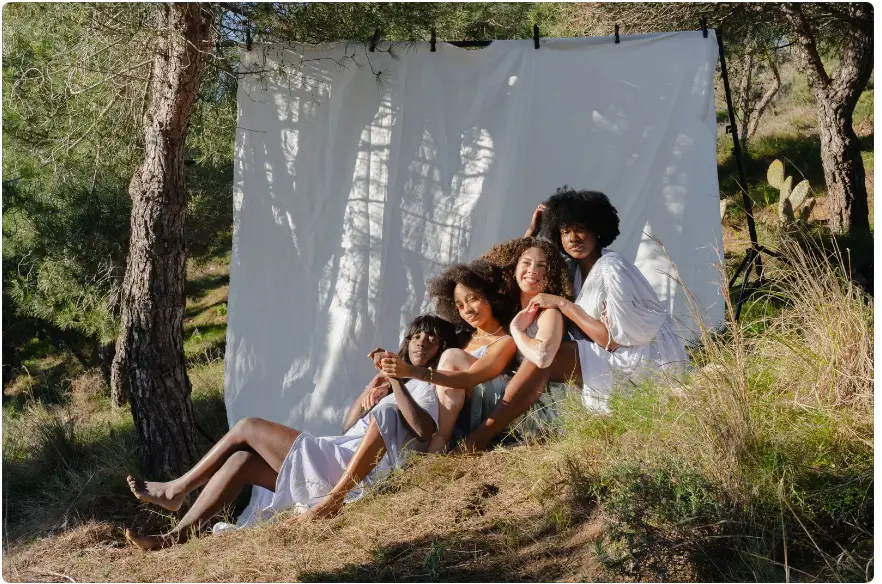Are you intrigued by the world of reality television and curious about what goes on behind the scenes when it comes to financing these captivating shows? In this comprehensive article, we unravel the complexities of reality show financing, discussing everything from development and network investment to advertising and international syndication.
Keep reading to gain insights into the various stakeholders and revenue streams that contribute to the success of your favorite reality programs.
Contents
1. Development
The first stage of financing a reality show involves the creation and development of the show concept. This stage typically includes hiring a production company to develop a pitch, create a pilot episode, or produce a proof of concept. The costs at this stage are usually borne by the production company or independent producers, and sometimes outside investors.
Investors can include private equity firms, venture capital, angel investors, or even crowdfunding platforms. These investors may provide seed money for the initial development, in exchange for a percentage of future profits or equity in the production company. The development stage is crucial for refining the show’s concept and creating a package that will attract networks or platforms.

2. Network or Platform Investment
Once a concept has been developed, the producers pitch the show to networks or streaming platforms (e.g., Netflix, Amazon Prime, etc.). If a network or platform is interested, they may invest in the show by providing funding for a full season or a specified number of episodes. This investment can cover production costs, talent fees, marketing expenses, and other related costs.
The amount of funding provided by the network or platform will vary depending on factors such as the show’s genre, projected audience, and production requirements. In some cases, a network may provide partial funding and require the production company to secure additional financing from other sources. A successful pitch often includes a comprehensive presentation of the show’s concept, a pilot episode, and a well-prepared budget.
3. Advertising and Sponsorship
A significant source of revenue for reality shows is advertising and sponsorship. Networks and platforms sell advertising slots during the show’s broadcast, and these revenues are often used to offset the production costs. Additionally, brands may sponsor specific segments or features within the show, providing additional funding in exchange for product placements or other forms of branded content.
The advertising and sponsorship deals can vary greatly in size and scope, depending on the show’s popularity, target demographic, and the brands involved. For instance, high-profile brands may be willing to pay premium prices for advertising spots or product placements in popular reality shows with large, engaged audiences. Producers may also negotiate long-term or exclusive sponsorship deals with brands, securing a steady stream of revenue for the show.
4. International Sales and Syndication
Reality shows that gain popularity may be sold to broadcasters in other countries, generating additional revenue. This can include licensing the show’s format for local adaptations or selling the original episodes for syndication. These international sales can contribute significantly to the show’s overall financing.
International sales can be facilitated by global content distributors or sales agents, who specialize in marketing and selling TV shows to foreign broadcasters. Licensing fees for format adaptations can range from a flat fee to a percentage of the local production’s revenues. For original episodes, the syndication fees can be based on factors such as the number of episodes, territories covered, and the size of the potential audience.
5. Ancillary Revenue Streams
Reality shows can also generate income through various ancillary revenue streams, such as merchandise sales, live events, or digital content offerings (e.g., behind-the-scenes footage, exclusive interviews, etc.). These additional revenue sources can help support the show’s overall financial viability.
Merchandise sales can include branded apparel, accessories, or even themed products related to the show’s content. These products can be sold online, in retail stores, or at live events, creating a significant source of additional income. Live events, such as fan meet-and-greets, conventions, or tours featuring the reality show’s cast or locations, can generate ticket sales and provide additional opportunities for merchandise sales and sponsorships. Digital content offerings, such as exclusive online content, mobile apps, or paid subscription services, can also contribute to the show’s revenue streams.

6. Ratings and Performance Metrics
A reality show’s financial viability is largely dependent on its ratings and viewership numbers. High ratings attract more advertisers and command higher ad rates, leading to increased revenue. Additionally, strong performance metrics can convince networks or platforms to invest in additional seasons or spin-offs, further extending the show’s revenue potential.
Performance metrics can go beyond traditional ratings and include social media engagement, online streaming numbers, and audience demographics. These additional data points can help producers and networks better understand their target audience and make strategic decisions regarding content, marketing, and advertising. This data-driven approach can also be used to make adjustments to the show’s format or production to better cater to the audience’s preferences and maximize financial returns.
7. Social Media and Fan Engagement
Reality shows that generate substantial social media buzz and fan engagement can benefit from increased brand visibility and promotional opportunities. Engaged fans may be more likely to purchase merchandise, attend live events, or consume digital content related to the show, providing additional revenue streams.
Leveraging social media platforms, such as Instagram, Twitter, and Facebook, can help create a strong online presence for the show and its cast members. These platforms allow for direct interaction with fans, fostering a sense of community and loyalty. Additionally, viral social media moments and user-generated content can provide free marketing and increase the show’s visibility, potentially leading to higher ratings and increased advertising revenues.
8. Cost Control Measures
In order to maximize profits, production companies and networks may implement cost control measures. This could include filming on location to reduce studio costs, utilizing a smaller production crew, or negotiating lower talent fees. These measures can help ensure that the show remains financially viable even if ratings or advertising revenues fall short of expectations.
Efficient production scheduling, resource management, and strategic partnerships can also contribute to cost control efforts. For example, partnering with local businesses or government entities for location access, equipment rentals, or permits can result in cost savings. Furthermore, leveraging in-house resources or sharing production facilities with other projects can lead to economies of scale and lower overall production costs.
9. Public Funding and Tax Incentives
In some cases, reality shows may be eligible for public funding or tax incentives, particularly if they are produced in certain regions or promote local culture and tourism. These incentives can help offset production costs and make the show more financially attractive to networks and platforms.
Public funding can come from national, regional, or local government agencies, as well as from cultural institutions or film commissions. Tax incentives may include rebates, credits, or exemptions based on the amount of money spent on production in a specific region or country. To qualify for these incentives, the production may need to meet certain criteria, such as employing local talent or showcasing regional culture and heritage.
10. Co-Productions and Partnerships
Sometimes, reality shows can secure additional financing through co-productions or partnerships with other media entities. For example, a reality show that is co-produced by two networks may benefit from shared production costs and a wider distribution network, leading to increased revenue potential.
Co-productions can involve collaboration between production companies from different countries, allowing for access to additional funding sources and potential tax incentives. These partnerships can also result in a broader range of content, as each party contributes its unique expertise and resources. Additionally, co-productions can help build relationships between media entities, potentially leading to future collaborations and increased market access.
Conclusion
Reality show financing is a multifaceted process that relies on a diverse mix of factors and revenue sources. Understanding the financial mechanics behind these popular shows can give you a newfound appreciation for the work that goes into bringing them to your screen. Now that you have a solid grasp of reality show financing, why not explore what the future holds for this beloved genre? Don’t miss our blog post on where reality TV will be in 5 years – it’s a fascinating look at the trends and innovations shaping the future of reality television.




